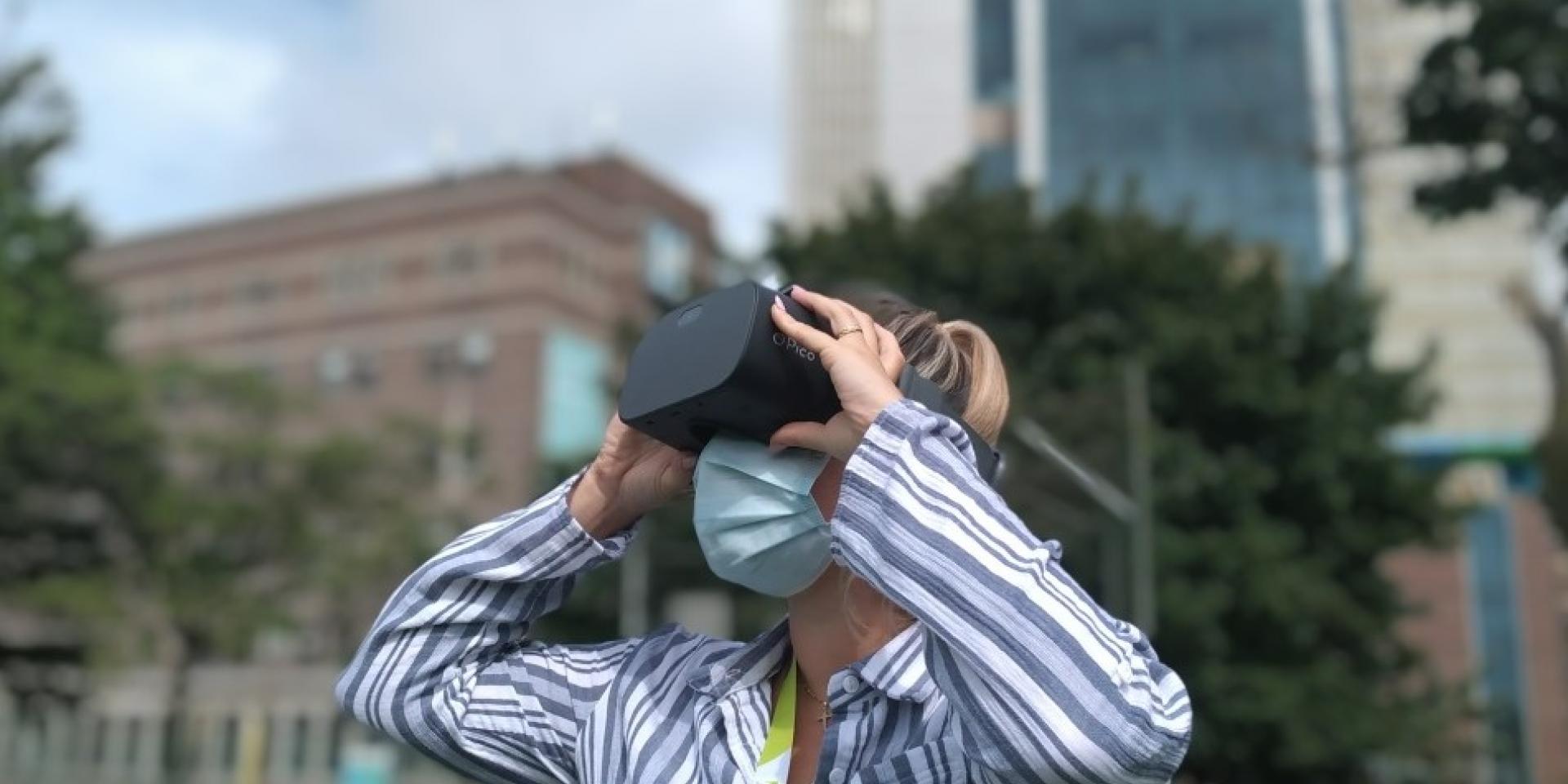Staff training at Michael Garron Hospital (MGH) is about to get more digital. Ahead of the move into the Ken and Marilyn Thomson Patient Care Centre (PCC) in late 2022, MGH will be introducing virtual reality (VR) training experiences to prepare staff for the transition into the new building.
The training will be accessible on a computer, phone or through a special VR headset. By combining VR platforms and 3D building renderings, users will immerse themselves in virtual simulations of the spaces in the new building. They will also be able to engage in conversation with other users, navigate around 3D objects and view images and videos. When exploring the building, staff will be able to take a “choose your own adventure” approach to access multiple points of view with a Google Street View-type perspective.
Before the PCC opens, staff will be trained on how to work in their new spaces using VR. Sarah Dewar, Educational Technology Specialist at MGH, is working to design these digital experiences, and says they will help ensure staff are prepared when it’s time for the big move.
“It’s a really great way to help people conceptualize something they can’t physically touch,” she says.
When Sarah began planning the staff training and orientation for the move to the PCC, it made sense to take advantage of virtual reality.
“We want to give people opportunities early and often to explore a space as it is being built, but also to develop the space in its entirety well in advance of the building being open,” she says. “Virtual reality and 3D images will allow us to do that.”
Many of the changes that staff and physicians will experience during the move are related to physical spaces and changing workflows.
“Staff will be going from rooms that have two to four patients in them to a floor with 80 per cent private rooms. The space is almost two to three times the size they are currently working in,” says Cheryl Nelson, Interim Director, Clinical Operations, Redevelopment at MGH. “This means changes to daily workflows.”
In the new building, staff may be working further away from their colleagues, and VR training can help them get accustomed to the space and plan for clear lines of communication.
Other changes are related to technology. For example, the new patient care centre will be set up with Automated Dispensing Units (ADUs), where staff can access patient medication profiles using fingerprint technology. The hope is that the ADUs will help to reduce medication errors.
“While the new technology does improve care, it is a bit of a learning curve,” Cheryl says. “It is new and exciting, but staff must to learn how to use it.”
While VR training was already planned before COVID-19, the pandemic turned it from a “nice to have” into a necessity for staff training, Cheryl says. “We definitely changed gears and are making VR a forefront of education.”
While creating VR experiences, it is important for Sarah to understand the different learner personas amongst MGH staff. She and her colleagues needed to account for the wide range of roles, demographics, learning styles and more.
“We want users to feel comfortable, engaged, interested and look forward to the new building,” she says.
Sarah believes this initiative can be a “stepping stone” towards future applications of VR. In the future, she sees MGH introducing VR for clinical training simulations, patient tours, visitor wayfinding and more.
Sarah is hoping to see the patient care centre VR training experiences launch this winter. By the spring of 2022, the goal is for staff to be accustomed to different types of VR experiences and familiar with the physical layout of the new building.
